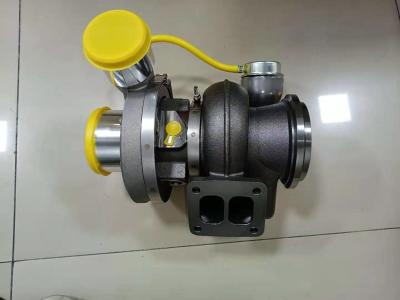





| Price | Negotiated |
| MOQ | Negotiable |
| Delivery Time | 5 - 8 work days |
| Brand | Komastu |
| Place of Origin | China |
| Model Number | 4D102 |
| Packaging Details | Neutral Package or Fumigation Free |
| Payment Terms | D/P, T/T |
| Supply Ability | 100 pieces |
| Condition | New | Engine model | 4D102 |
| Place of Origin | China | Packaging Details | Neutral Package or Fumigation Free |
| Color | Same as pictures | Excavator model | PC120 - 6 |
| Material | Metal | Model Number | 4D102 |
| Supply Ability | 100 pieces | Brand Name | Komastu |
| Payment Terms | D/P, T/T | Price | Negotiated |
| Delivery Time | 5 - 8 work days | Product name | Diesel Engine Turbocharger |
| Quality | High quality | Part number | 3539803 |
4D102 Diesel Engine Turbocharger For Excavator PC120 - 6 3539803 HX30 Spare Parts
Specification
| Part Name: Engine turbocharger | Serial code: HS181115297 | |
| cylinders numbe: 4 | Type: Diesel engine | |
| Application: Construction machinery | Cust: 3539803 | |
| Type: Direct injection | Industrial Engine: 4D102 | |
| Model: HX30 | Assy: 3539803 | |
Description
What Is a Turbocharger?
People
from
the
1980s
are
likely
to
be
better
acquainted
with
the
word
‘turbo’
because
it
was
applied
to
plenty
of
products
at
that
time
such
as
turbo
skateboards,
turbo
razors,
and
many
other
things.
But,
this
is
not
what
has
revolutionized
the
auto
industry.
A
turbocharger
is
a
turbine-driven
forced
induction
machine
that
boosts
the
efficiency
and
power
output
of
an
internal
combustion
engine
by
bringing
additional
air
into
the
combustion
chamber.
If it seems a bit complicated to understand how a turbo works, take the cue from the fact that an engine run by a mixture of fuel and air. When a turbocharger brings more air into the chamber, it gets mixed with more fuel, yielding more power as a result. It smuggles air by compressing it using the energy of the exhaust gasses coming out of the engine.
Where Do Turbochargers Come From?
The
first
turbocharger
was
produced
in
the
late
19th
century
by
German
engineer,
Gottlieb
Daimler,
but
they
didn’t
come
to
prominence
until
after
WWI,
when
aircraft
manufacturers
began
adding
them
to
aeroplanes
to
provide
power
to
engines
operating
at
higher
altitudes,
where
the
air
is
thinner.
Turbochargers weren’t added to car engines until 1961, when US manufacturer Oldsmobile, used a simple turbo to boost the power of a 3.5L V8 engine. In 1984, Saab developed a new, more efficient turbo system, and this design, with a few tweaks and modifications, remains the most popular turbocharger configuration today.
Efficiency vs Driving Style
Achieving
the
claimed
efficiency
figures
of
a
turbocharged
engine
requires
careful
throttle
control,
whereby
the
accelerator
isn’t
pressed
too
hard.
When
a
turbocharger
is
‘on
boost’,
the
cylinders
are
burning
fuel
more
quickly,
leading
to
poor
efficiency.
Drivers
going
from
a
naturally-aspirated
car
to
a
turbocharged
model
may
need
to
adjust
their
driving
style
to
maintain
good
efficiency,
particularly
when
first
setting
off.





